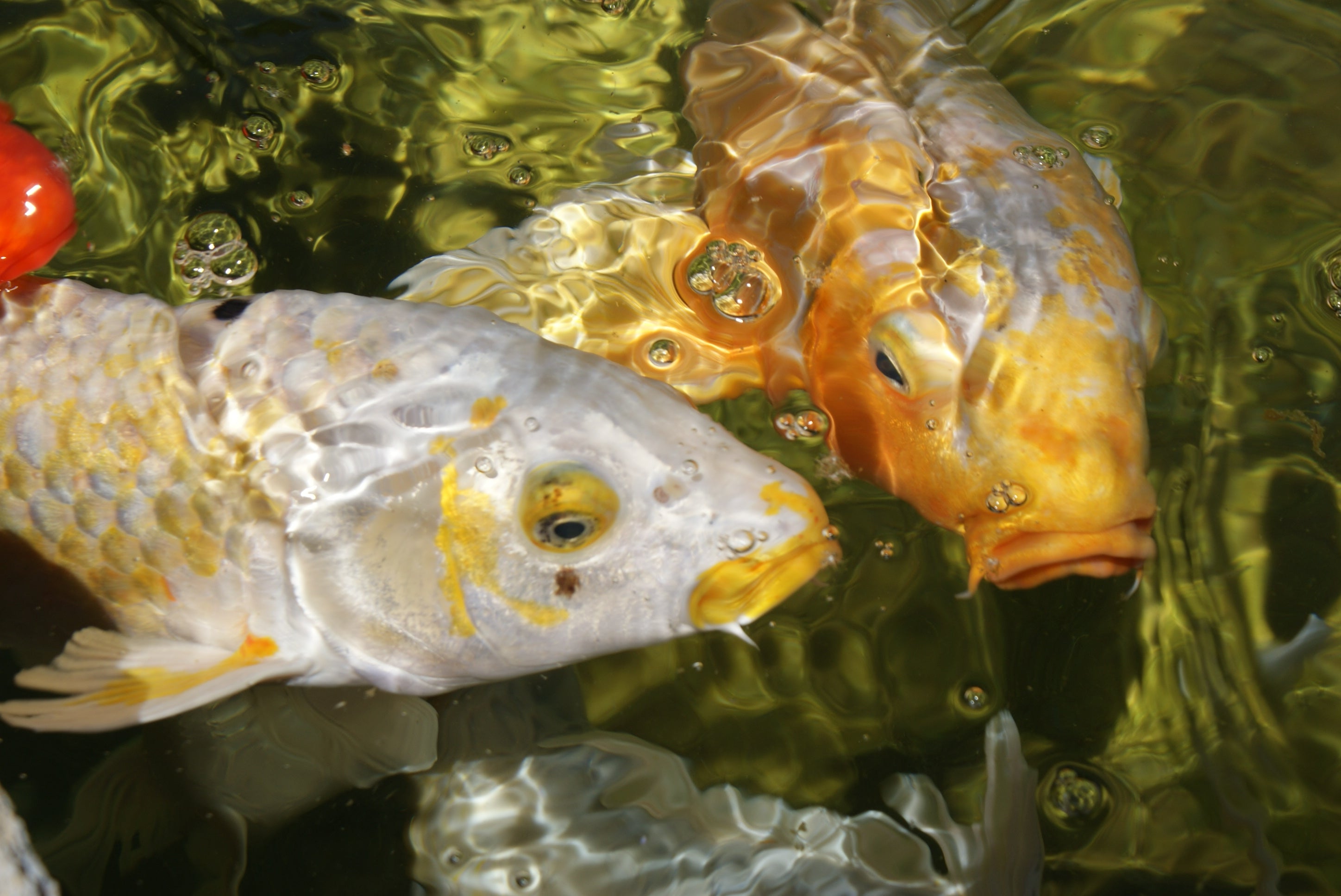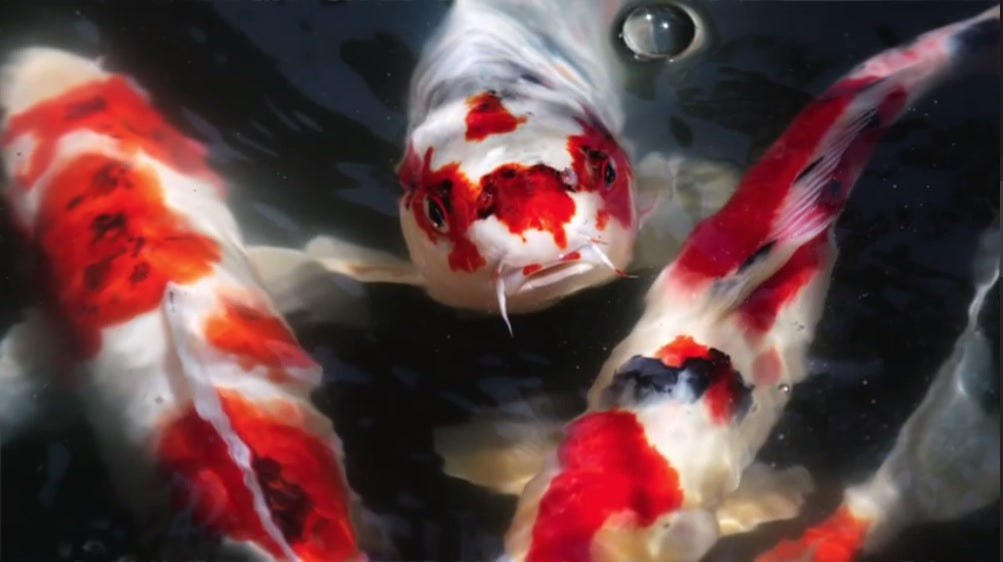
How to Care for Pond Fish in Winter
If you have a fish in your pond, moving into the winter season can be a concern. You want to make sure you are taking the best care of your fish through this season. Luckily taking care of your fish during this time can be simpler than you may think.
In winter months, your fish will naturally adapt to the changing seasons. In winter, they will adapt by slowing down activity to a level where many people believe their fish are hibernating. Pond fish do not hibernate, but in many ways they do appear that way. After temperatures have dropped below 50 F, you can stop feeding them as they will naturally stop eating. Their movements will slow, and they will float in place the warmest part of your pond which will likely be at the bottom of the pond. The internal temperature of your fish will be based on the water temperature around them. This is why it is important to disconnect any pumps from the pond and store indoors, as mixing the water will also mix the temperatures of the water. This will not secure that warmer space at the bottom of the pond as a safe place for your fish.
Often times in winter, a layer of ice will form on the surface of the pond. If this is likely to occur in the area you live in, utilize a Pond Aerator or deicer to maintain an opening in the surface of the water. This will allow for oxygen to enter the water and for toxins to be released from the water. It is also helpful to utilize Naturals Cold Water Bacteria for Ponds to break down decaying plants and high nutrient loads so the toxins can be released from this opening in the ice. If the surface of the pond completely freezes over, don’t break the ice as this could cause a fatal shock to your fish. Simply boil a pot of water and pour the water in a concentrated spot on the ice. This will safely reopen the pond surface, and should not take much time to complete.
In addition to steps you can make to protect your fish during winter months, there are also a few things you can do leading up to the winter months to prepare your pond to best accommodate your fish during colder temperatures. The first is to trim and remove any brown leaves or stems on your aquatic plants. Work to also remove any leaves that have fallen into the base of your pond and remove any sludge layers that may be at the base of your pond. A Pond Vacuum, Fish Net, or Sludge Remover would be helpful for this step. Next, prior to winter freezes you will want to remove pond equipment such as pumps, floating fountains, and filters. Running a fountain nozzle or waterfall after a pond surface freeze can drain a pond’s water level, so those connections should be disconnected or turned off. It is best to remove pond pumps and store in a bucket of water indoors. Finally, it is best move fish indoors for the season if you believe a pond will freeze solid due to shallow depth or if you anticipate pond water temperatures below 34 F as these temperatures could cause freezing damage on fish gills.
Now that you have an idea of how to prep for winter and how to continue to maintain your pond well throughout the winter season. Your fish will thank you for taking care of them well through the cold months, and with a few steps you now know that this task is simpler than you might have thought.


